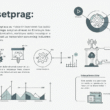Car accidents can be stressful and confusing, especially when you’re not at fault. Understanding your car insurance and how it works in such situations is crucial. Liability car insurance is a key part of this understanding. This article will explore what liability car insurance covers and how it protects you, even when you’re not to blame for an accident.
What is Liability Car Insurance Coverage?
Liability car insurance is essential for all drivers. It’s designed to cover costs you might be legally responsible for in an accident, such as damage to another person’s car or medical bills if someone is hurt. However, understanding your liability car insurance coverage if you’re not at fault is also vital. It gives you an idea of what to expect from the insurance process and how you can seek compensation.
Understanding Fault in Car Accidents
Determining fault is a crucial aspect of insurance claims in car accidents. In some instances, the party responsible for the accident is apparent, while in others, especially those involving multiple vehicles or specific road conditions, it becomes more intricate. Insurance companies typically conduct thorough investigations to establish fault, influencing claims processing. The complexity arises when it’s not immediately clear who is at fault, requiring a detailed examination of the circumstances. This process involves considering various factors such as witness statements, police reports, and available evidence to ascertain the responsible party. The outcome of fault determination significantly impacts how insurance claims are handled and resolved.
Role of Liability Insurance When Not at Fault
If you’re not at fault in an accident, typically, you won’t need to use your liability insurance. Instead, the other driver’s liability insurance should cover your vehicle repairs and medical costs. However, if the other driver disputes their fault or their insurance coverage is insufficient, you might need to involve your insurance company.
Handling Claims with Your Insurance Company
After an accident where you’re not at fault, it’s advisable to inform your insurance company. They can provide guidance and support, even if you’re not claiming your policy. Your insurer can also intervene if there are issues with the at-fault driver’s insurance company.
Dealing with the Other Driver’s Insurance
Interacting with the other driver’s insurance company can be challenging. They may try to deny the claim or offer a settlement that doesn’t fully cover your costs. Staying firm and providing clear evidence of the other driver’s fault and the extent of your damages is crucial.
Understanding Coverage Limits
Coverage limits are an important aspect of liability insurance. These limits determine the maximum amount an insurance company will pay in the event of an accident. If the damages exceed the at-fault driver’s coverage limits, you may need to seek the remaining balance through other means, such as your insurance or legal action.
What if the At-Fault Driver is Uninsured?
If the person responsible for an accident doesn’t have insurance, things get more complicated. In such cases, your uninsured motorist coverage becomes important. This coverage is there to help you when the at-fault driver doesn’t have enough insurance to cover the damages.
The Importance of Documentation
Proper documentation is key to a successful insurance claim. Detailed accident records, photographs, police reports, and receipts for all related expenses strengthen your claim. Good documentation helps ensure that the insurance companies cannot undervalue or deny your claim unjustly.
Negotiating with Insurance Companies
Negotiating with insurance companies can often feel like an uphill battle. Consulting with a legal or insurance claims specialist may be wise if you find the negotiations challenging or the offers inadequate. These professionals can offer invaluable advice on communicating effectively with insurers and even take over the negotiation process.
Their insurance law and claims handling expertise can significantly increase your chances of getting a fair settlement. It’s essential to stand firm and not accept a settlement that won’t cover all your costs and losses.
Protecting Yourself with the Right Coverage
Choosing the right insurance coverage is crucial for protecting yourself against unforeseen events on the road. While liability insurance is mandatory, it only covers damages to others when you’re at fault. Consider additional coverages like collision and comprehensive insurance to safeguard your interests.
Collision coverage will cover damages to your vehicle in the event of an accident, regardless of who is at fault. Comprehensive insurance covers non-collision-related incidents such as theft, vandalism, or natural disasters. Combining these coverages with your liability policy ensures a broader safety net. It’s also beneficial to review your policy periodically and adjust your coverage as your circumstances change, ensuring you’re always adequately protected.
Understanding liability car insurance coverage, especially when you’re not at fault, is essential for every driver. Being well-informed and prepared can significantly impact the outcome of your insurance claims following an accident. Remember, the right coverage is key to safeguarding yourself against the unexpected on the road.




